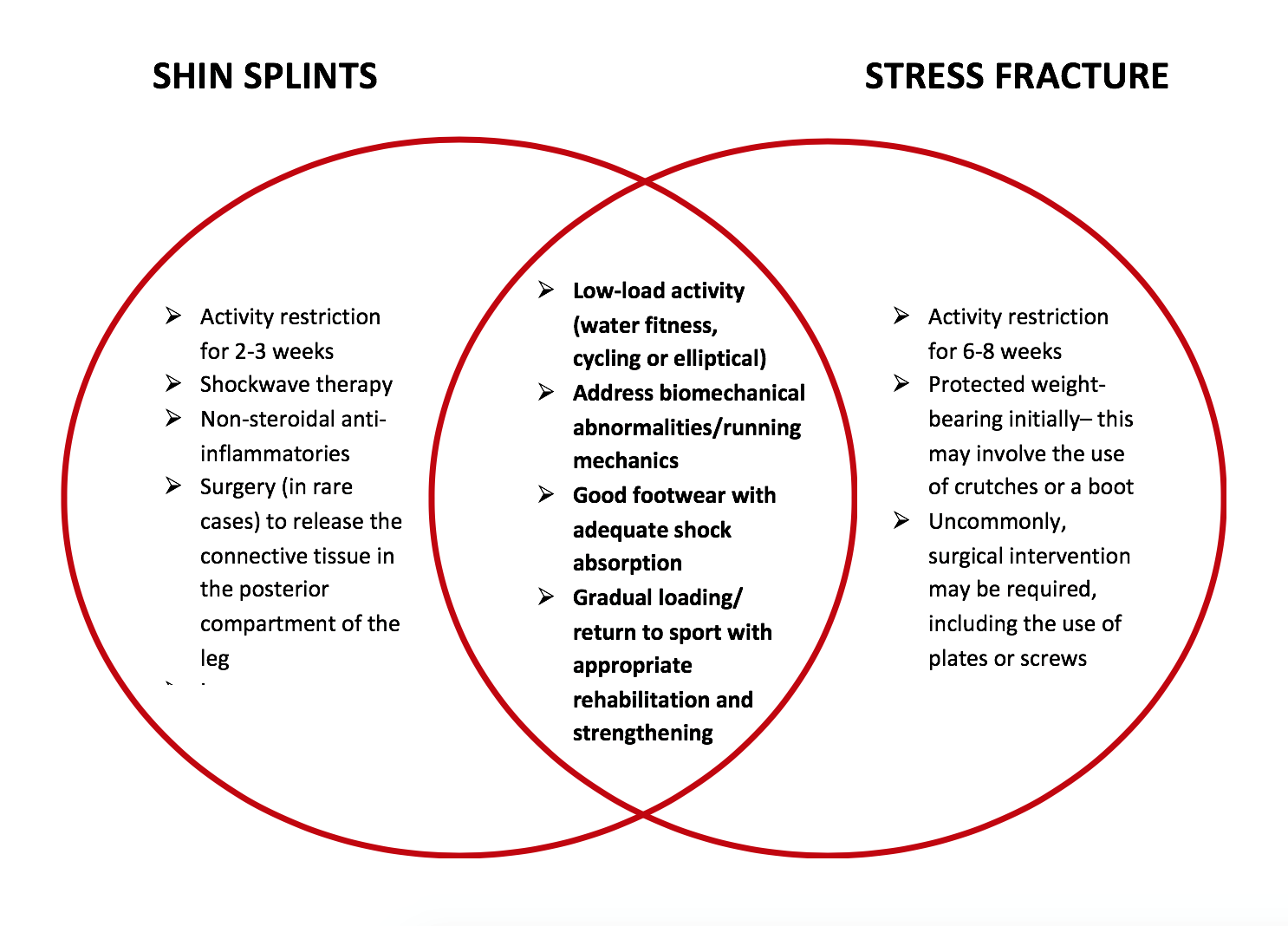Stress fractures and “shin splints” (Medial Tibial Stress Syndrome) are two common overuse injuries of the lower leg. Both of these conditions usually result from a recent increase in training volume or intensity with inadequate time for healing and recovery. These injuries are common in runners and occur due to repetitive loading through the shin bone and excessive muscle contraction forces. Dysfunction or imbalances in the muscles of the lower leg is also common in these conditions.Other contributing factors to these conditions include:
- Poor footwear - inadequate cushioning, resulting in reduced shock absorption
- Running on hard or uneven surfaces
- Leg-length differences
- Overpronation of the foot (flattened arch)
- Obesity
- Low bone density
How are these conditions different?
- Shin splints is a form of early repetitive-stress injury, while a stress fracture is the most common complication of shin splints
- Shin splints is characterised by inflammation of the tissue that runs along the tibia, while a stress fracture is a small crack that forms within the bone itself
Symptoms
| Shin Splints | Stress Fractures |
|
|
Additional symptoms including moderate-to-severe swelling, redness/heat in the area, tightness, pins and needles or altered sensation are important to recognise, as your leg pain may be attributable to compartment syndrome or other vascular conditions
Management
- An MRI, CT scan or bone scan is used to identify a stress fracture – your therapist may see fit to send you for a scan. An X-ray may not show stress fractures early on
- The main difference in the management of these two conditions is the TIME required for healing. A stress fracture requires at least 6-8 weeks to heal, often longer, before returning to any activity or loading. In the case of shin splints, you may be able to start gradually progressing into activity after 2-3 weeks of rest
- Some of the management strategies used in these two conditions are similar, and are shown below
 |
A physiotherapist is skilled in the diagnosis of these conditions and is able to differentiate between many other possible causes of leg pain that require different management. Call us today on (07) 5527 7092 to book a consultation!

